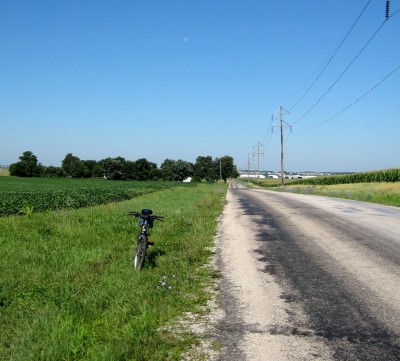In my family, “brain chemicals” is the shorthand term for unmotivated negative feelings. That is, when you’re feeling sad because something bad happened, that’s normal, but when you’re feeling sad for no particular reason, that’s brain chemicals. (On the theory that you’ve probably got a chemical imbalance or something, and that you should probably see a doctor about it when you’ve got the time.) The same applies to anger, frustration, anxiety, etc.
I mention this because I often suffer from brain chemicals, especially this time of year, when the days get short and dark and cold.
I’m actually doing pretty well this year. I’m doing a bunch of things that help. I’m taking my vitamin D. I’m trying to get outdoors for some actual sunlight, any day that there is any. I’m getting my exercise in. (For many months now, Jackie and I have been lifting weights three times a week and doing an hour of taiji three times a week. I’m trying to get in an hour of walking and at least a few minutes of additional taiji on the other days of the week.) I’m being productive. I’m getting enough sleep.
Still, despite all that, brain chemicals seemed to be setting in yesterday. I was feeling over-busy, under-accomplished, and frustrated. So, I went to level two in the fight against brain chemicals, and scheduled an artist’s date.
I think of it as a date with my muse. A proper artist’s date involves going somewhere and spending time with something that spurs creativity. That could be almost anything, and if I did them more often (and I really should) I’d probably have to broaden the range of places that I go. But I don’t do them very often, so I can usually get away with taking my muse to the same few places.
I started at the Krannert Art Center. Much of their exhibit space today was full of stuff that I had little interest in, but outside the museum proper there’s a changing exhibit of student work that’s often more interesting than the work in the museum itself. Today it had the work of school children. There were a lot of interesting ideas—for example, a low passageway made of cardboard where kids who’d studied ancient cave paintings had painted their own—even if only a few of the actual pieces spoke to me.
Connected to the museum is the school of design building. They often have some student work on display in the hallway, and I rather liked a small group of pieces by students who had apparently had the assignment to create a brand identity for themselves. They produced the same elements that a brand identity package from a marketing firm would provide—a name and logo (provided in a couple of sizes and formats, in both color and black & white), together with some key terms and images that could go into a branded ad campaign.
It was everything an artist’s date needs to be—a reminder that creativity is everywhere, a reminder that there can be joy in art of all sorts.
I was already feeling better today, and expect that I’ll feel even better tomorrow.


